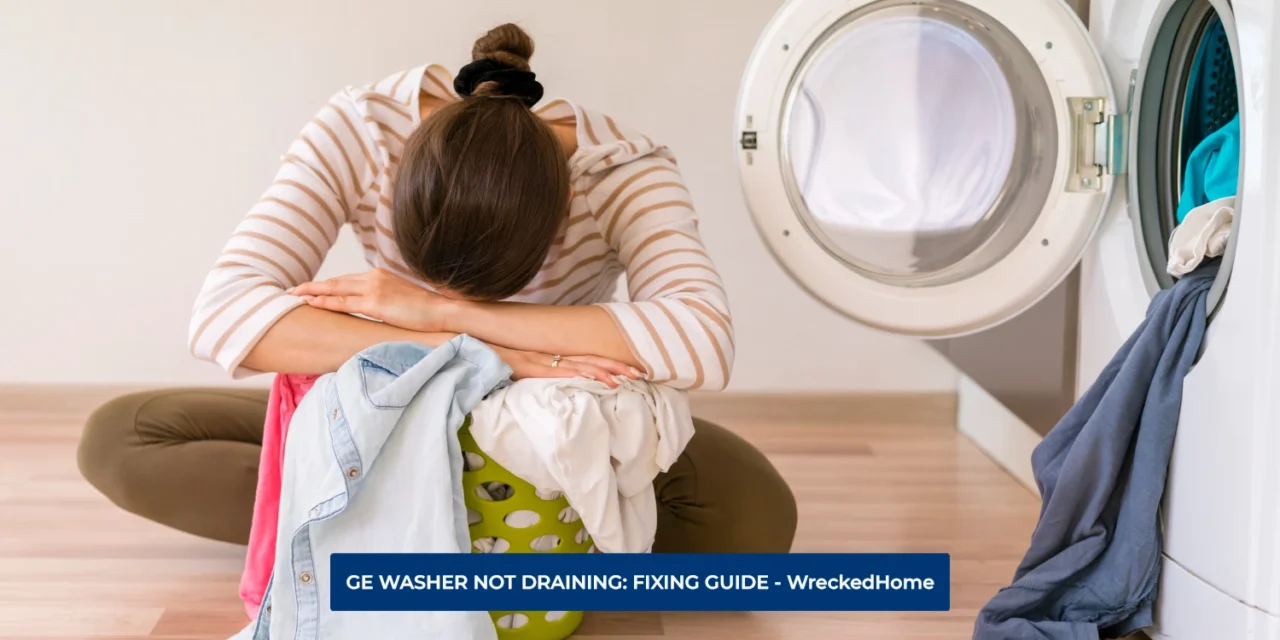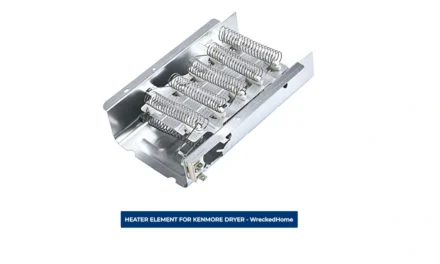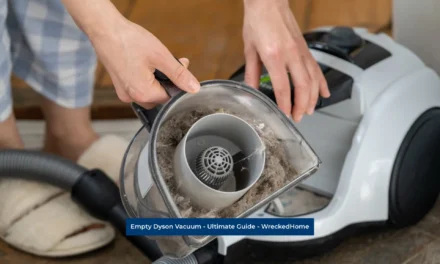Have you seen your clothes remain in dirty water in your washer tub after the cycle completes? It means your you have the problem of your GE washer not draining. This is the second most common problem that GE washer users encounter.
Clogging and kinking in the drain hose, pipe and filter problems all cause issues. Washer balancing, sudsing, and washer parts damage may also bring trouble.
So, let’s see why is your GE washer not draining or spinning in detail.
Reasons And Solutions For Ge Washer Not Draining
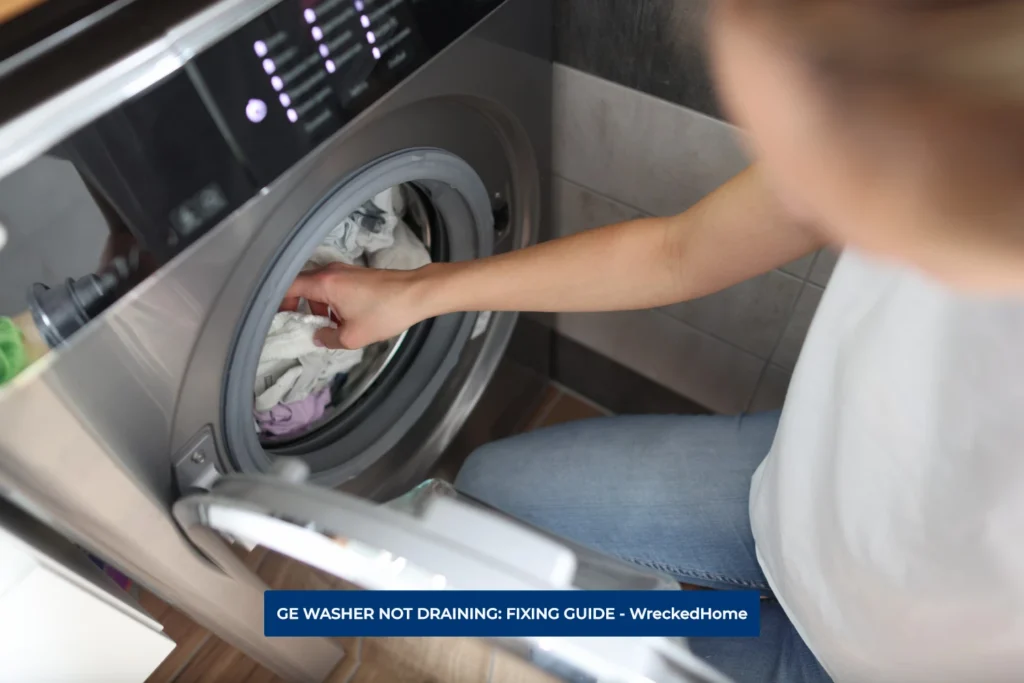
Similar to the Samsung washer not spinning issue, the GE washer also shows draining and spinning problems. Here are 10 reasons and solutions for your GE washer not draining.
Ge Washer Not Draining: Clogged Drain Pump Filter
If you feel water is not coming out of your machine despite the pump running, there may be a clog in the filter. A clog in the filter will make your Ge washer not drain properly.
The reason for clogging can be small objects like buttons or coins. You can prevent any damage by cleaning the clog in the filter. To clean the filter, you have to remove it then spray with with cold water. Don’t forget to put it back when it is clean.
Thorough cleaning will fix the problem, you can check it by turning on the machine. If you find that the problem is still there, access the pump filter. You can get access it by removing the machine from the wall. Disconnect the back panel and locate the drain pump filter.
First, detach the hose from the inlet side and check the debris. To make it useful again clear the debris and reattach the hose. Switch the water supply to recheck it. If you see water draining again, check air drainage pressure at external drainage locations.
Ge Washer Not Draining: Clogged Drain Pump
If your GE washer not draining, the problem may be a clogged drain pump. Clothing tags caught in the drain pump of your washing machine prevent it from draining correctly. Check your washer’s manual instructions to know how to get access to drain pump. Also, you can read about methods to clean your washer.
The most common issue one can face by using it is blockage. Dirt, debris and foreign objects get stuck in the pump and cause problems. Clearing the blockage and restoring the drain flow will be helpful for your machine to work correctly. Repair the drain pump to fix all the issues.
Ge Washer Not Draining: Clogged Drain Hose
The GE washer drain hose carries water out of washing machines after usage. If there is a clog or kink in the drain hose, water will not be able to flow during the draining process. If you see your GE washer not draining like Maytag Neptune washer often does, a clogged drain hose can be a cause. It also leads to other problems, such as a pool of water outside your washer. To avoid such problems, keep your drain hose clear of items that create a clog and stop the function.
You can prevent damage to your hose by inspecting inside of it. You can use a camera or flashlight and check if there is a tear. If you feel any crack, replace your hose with new one. Otherwise, it causes other major problems and damages your floor.
To get perfect water drainage, place the drain hose equal to 96 inches off the floor. If you place it higher than 96 inches, water will not be able to flow off your washing machine. Correct placement of drain hose is important so machine draining process becomes smooth and does not experience flooding.
GE washers have alert signals that inform you about drain clogs as soon as the problem happens. Alerts help you to fix the problem quickly before it becomes major and destroy your machine.
How to check the drain hose and fix the problem (GE Washer Not Draining)
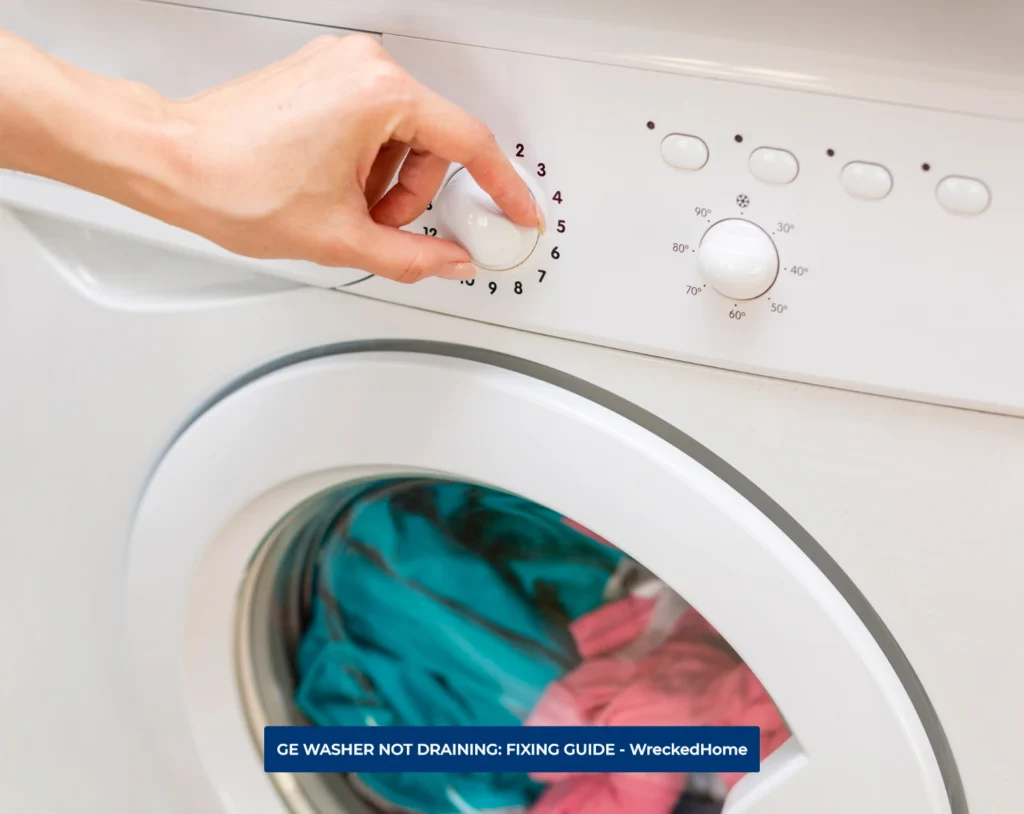
To check the drain hose kinks and clogs and fix the problem, follow the below steps.
- First, unplug the washer and turn off the water supply.
- Second, move the GE washer away from the wall to get access to the hose.
- Disconnect the hose from washer and gently untwist to remove kinks.
- If you see there are no kinks, check for other blockages like coins or lint and remove them.
- Make sure to disconnect the hose pipe on the other end to reach the clog.
- After removing clog, again attach it to the washer.
- Plug the washer and turn on water supply. If it works properly, then use the washer; otherwise, replace the drain hose.
Ge Washer Not Draining: Excess Washing Fluid or Detergent
If you are using too much washing fluid or detergent, the washer creates too many suds. These suds and residue cause clogging in the pump.
To solve this issue, first find a quality detergent. Find the right detergent amount according to your GE washer model.
Use right amount of detergent and then pour it into right location of your washer. It will allow smooth washing and draining of water. It also avoids clogging in the pump. Moreover, it will also save your floors from being slippery and dirty. Kenmore 80 series washer also gets in trouble, so find the solutions with this link.
Ge Washer Not Draining: Check Lid Switch:
The lid switch is an electrical component on top load washers. It signals the washer that the lid is closed, enabling a wash cycle to start. If you see that the lid is not closed or the switch is faulty, you will find that your GE washer not draining after filling with water.
Check the lid when it is open and the machine is in use. A lid switch will stop the machine. The washing machine will not start again until the lid is closed or secured into place. This safety mechanism will prevent small objects from falling into large appliances. It also helps to keep your child safe during use of machine.
If someone suspects a lid switch is broken, then you have different ways to check a faulty lid switch. The first way is to open the lid and push down the switch. If you feel your lid switch is broken, repair it. The second option is a multi-meter that checks the connection between the lid switch and the motherboard.
How to replace a faulty lid switch (GE Washer Not Draining)?
Unplug the washing machine from the wall outlet. Open the lid without touching the drum. The switch is on the top of the drum frame under the top cover. Disconnect the lid from its wires by pressing down on its tab while pulling up. You may need a Screwdriver to do this. Replace the old one with the new switch, then put the top cover in its place. Your Ge washer will not work if the lid is left open and the lid switch keeps it closed.
Note:
While installing new parts, make sure to leave enough space to work with wires, like Maytag Bravos XL washer. Be careful because mishandling can cause damage to the new lid switch.
Ge Washer Not Draining: GE Washer Parts Failure
Sometimes, the GE front load washer not draining may be due to the failure of its parts. Malfunctioning in parts results in draining issues and requires expert care and replacement.
Faulty drain pump:
Replace a faulty pump to drain water properly. Remove the blockage to restore its function.
Failed door lock or switch:
The door lock and switch fail to work electrically and also stop the washer from working. The washer won’t receive a signal to begin spinning and draining. Fix both issues immediately.
Broken door strike:
The broken door strike won’t fit the door lock mechanism. When the GE washer door closes, it will not remain secure or signal the washer for spinning or draining.
Ge Washer Not Draining: Overloading the Tub
Stuffing your GE washer with a bulk of clothes is not a good idea as it can lead to different major issues. As a user, avoid overloading your washer, even if you have less time. To know the actual number of clothes you can wash in washer, consult your washer manual about the maximum laundry weight your washing model handles easily.
Avoid overloading for optimal performance of the machine. You cannot neglect the balance of the front-load washer for proper working and washing of the clothes. Uneven distribution of clothes will eventually cause damage to the internal drum of the Ge washing machine.
This damage is not good for proper wash cycles, and it will cost you money to repair it. It also devalues your product if you want to resell it in future. So, add more clothes if the weight is less and remove the clothes if the weight is more than required.
To ensure proper machine function, check the level of the clothes in the washer to prevent it from vibrating and moving around while in use. It is also important for fine washing of clothes and functioning of the wash cycle.
If the problem isn’t solved, you can change your washer. Read our guide about which washer you should select: Agitator vs impeller.
Ge Washer Not Draining: Excessive Suds
Excessive suds is not an error on your part. It occurs only due to excessive usage of detergent or non-HE detergent. Some machines handle more suds with enough water flow to flush out all suds. However, other machines cannot handle this amount of soap.
The machine gives you signals through the error to use less detergent next time. Wash the drum with one cup of vinegar or two cups of CLR or RID-X. Run a machine cycle using hot water. This process will eliminate any residue near the drain and allow it to drain properly for future use.
Ge Washer Not Draining: A Damaged Or Worn Belt
One reason why your GE washer not draining is the drive belt. If drain pump is not damaged and the washing machine is not washing properly then the reason might be worn belt.
The location of the drive belt is at the bottom of the washer, and its purpose is to operate the pump. It is important for washing of the cloth. Therefore, you can replace it if it needs replacement.
If your Ge washing machine is having any trouble while spinning, It may be a problem with the belt. So, contact the manufacturer of the product to get replacement of belt or order a new one. The replacement process is below.
- Unplug the washer and remove the back access panel first. Then, lower the tub until it locks into place.
- After removing the back access panel, you will get access to the drive belt.
- Check belt for wear and tear and examine whether there is any notable imperfection. Replace the drive belt if there is a need for any replacement.
Ge Washer Not Draining: Water Sloshing Sound:
Sometimes you hear the sloshing sound without water visibility in the basket. It is due to the washer balance ring. The washer balance ring is a plastic container that is filled with a salt water solution. It is attached to the inner cloth basket and allows the basket to spin smoothly when the situation is out of balance. Don’t worry about the sound; it is a normal sound.
FAQs (GE Washer Not Draining)
How do I reset my GE washer control board?
To reset the control board of your washer, first shut off circuit breaker or unplug your washer for 2 to 3 minutes. If your washer has a timer control knob, turn it around and choose another position rather than final spin. It will cause interruption of the cycle, after which you can restore power.
Why is your GE Top Load Washer Not Draining Or Spinning
If your GE top load washer not draining, there may be clog or kink in drain hose. Clean the washer or remove kink for clear functioning. If your washer is stuck mid-cycle, there may be some big clothing piece in drum.
Why is my GE Front Load Washer Not Draining Or Spinning
If your GE front load washer is not draining, check clogs or kinks in drain pump filter and hose. Keep your washer level so it spins rightly and produces smooth water flow. Also check the door latch of your washer.
Conclusion
The GE washer not draining issue is due to many reasons which we have discussed here in this article. Check one by one to find the real problem and solve it by following our guide.
If you can’t fix this issue after troubleshooting, please don’t hesitate to call a professional. Find A Pro Near You Here!

